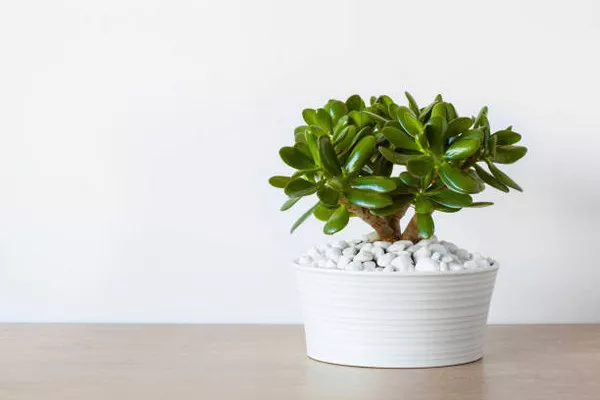Indoor succulents have surged in popularity over recent years, adorning windowsills, desks, and shelves with their vibrant colors and striking shapes. These resilient plants are favored for their low maintenance requirements and ability to thrive in various environments. However, while succulents are known for their hardiness, proper care is essential to ensure they remain healthy and vibrant indoors. In this comprehensive guide, we’ll explore everything you need to know to successfully care for indoor succulents, from selecting the right varieties to providing optimal growing conditions and troubleshooting common issues.
Selecting the Right Succulents
Choosing the right succulents for indoor cultivation is the first step towards successful care. With thousands of species and cultivars available, it’s essential to consider factors such as light requirements, size, and growth habits. Here are some popular indoor succulents to consider:
1. Echeveria: Known for their rosette-shaped leaves and stunning colors, echeverias are excellent choices for indoor display.
2. Aloe Vera: Not only prized for its ornamental value, but aloe vera also offers medicinal benefits and is relatively easy to care for indoors.
3. Haworthia: With their compact size and distinctive markings, haworthias are ideal for small spaces and low-light conditions.
4. Sedum: These versatile succulents come in various shapes and sizes, making them suitable for a wide range of indoor environments.
5. Jade Plant (Crassula ovata): Renowned for its resilience and longevity, the jade plant is a classic choice for indoor gardening.
Providing the Right Growing Conditions
Creating a suitable environment is crucial for the health and vitality of indoor succulents. While these plants are known for their ability to withstand drought and harsh conditions, they still require specific care to thrive indoors. Here are some key factors to consider:
1. Light: Most succulents prefer bright, indirect light. Place them near a south or west-facing window where they can receive ample sunlight without being exposed to direct rays, especially during the intense afternoon hours.
2. Temperature: Succulents generally prefer warm temperatures during the growing season (spring and summer) and cooler temperatures during the dormant period (fall and winter). Aim for a temperature range of 60-80°F (15-27°C) during the day and slightly cooler at night.
3. Watering: One of the most common mistakes in succulent care is overwatering. Allow the soil to dry out completely between waterings, then water thoroughly until the excess drains from the bottom of the pot. In winter, reduce watering frequency to prevent root rot.
4. Soil: Well-draining soil is essential for succulents to prevent waterlogged roots. Use a commercial succulent or cactus mix, or create your own by mixing equal parts potting soil, perlite, and coarse sand.
5. Container: Choose pots with drainage holes to allow excess water to escape freely. Terra cotta pots are excellent choices as they help absorb excess moisture from the soil.
Maintenance and Care
While succulents are relatively low-maintenance plants, they still require regular care to stay healthy and attractive. Here are some essential maintenance tasks to keep your indoor succulents thriving:
1. Pruning: Remove any dead or yellowing leaves to improve airflow and prevent the spread of disease. You can also prune leggy growth to encourage a more compact and bushy appearance.
2. Fertilizing: Feed your succulents with a balanced fertilizer diluted to half strength during the growing season (spring and summer). Avoid fertilizing during the dormant period.
3. Repotting: As succulents grow, they may outgrow their containers. Repot them into slightly larger pots every 1-2 years or when you notice the roots becoming crowded.
4. Pest Control: Keep an eye out for common pests such as mealybugs, aphids, and spider mites. If detected, treat affected plants promptly with insecticidal soap or neem oil.
5. Rotation: Rotate your succulent pots regularly to ensure even growth and prevent them from leaning towards the light source.
Troubleshooting Common Issues
Even with proper care, indoor succulents may encounter some challenges. Here’s how to troubleshoot common issues:
1. Yellowing or Dropping Leaves: This is often a sign of overwatering or poor drainage. Allow the soil to dry out completely before watering again, and check the drainage holes to ensure they’re not blocked.
2. Leggy Growth: Insufficient light can cause succulents to stretch out and become leggy. Move them to a brighter location or supplement natural light with grow lights.
3. Pests: If you notice signs of pest infestation, isolate the affected plants and treat them with insecticidal soap or neem oil. Regularly inspect nearby plants for signs of pests to prevent further spread.
4. Root Rot: Root rot occurs when succulents are overwatered or planted in poorly draining soil. If detected early, you may be able to save the plant by removing affected roots and repotting in fresh, well-draining soil.
5. Fungal Diseases: Avoid overwatering and ensure proper air circulation around your succulents to prevent fungal diseases such as powdery mildew and rot. If necessary, treat affected plants with fungicides according to the product instructions.
Conclusion
By following these guidelines and providing proper care, you can enjoy the beauty of indoor succulents year-round. With their stunning colors and unique forms, succulents are sure to brighten any indoor space while requiring minimal maintenance. Whether you’re a seasoned plant enthusiast or a novice gardener, cultivating indoor succulents is a rewarding and enjoyable experience that brings nature indoors.


